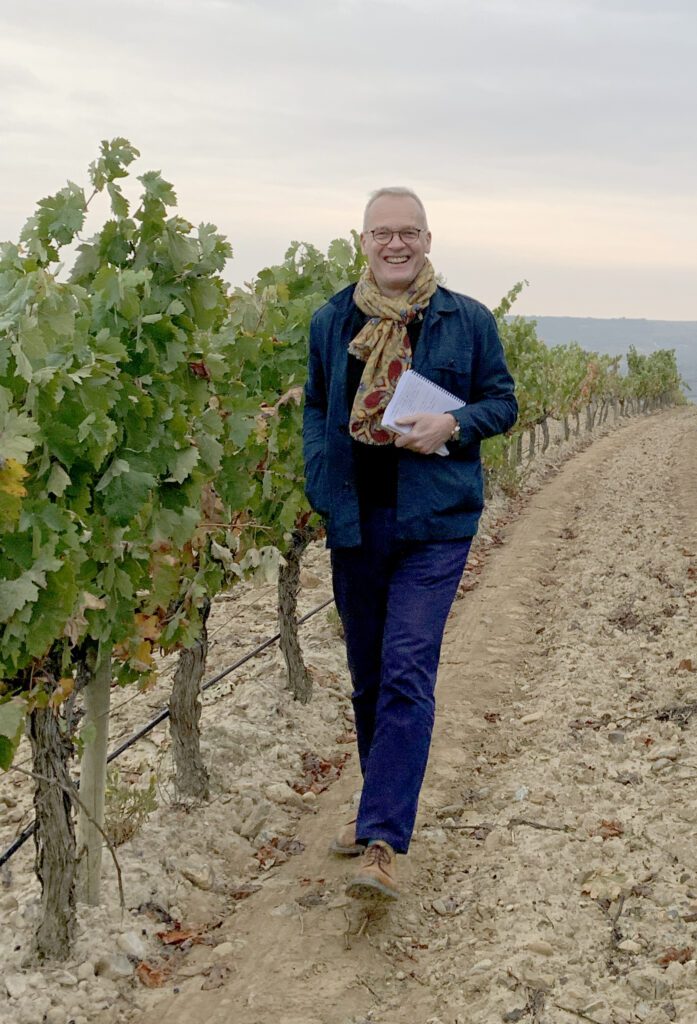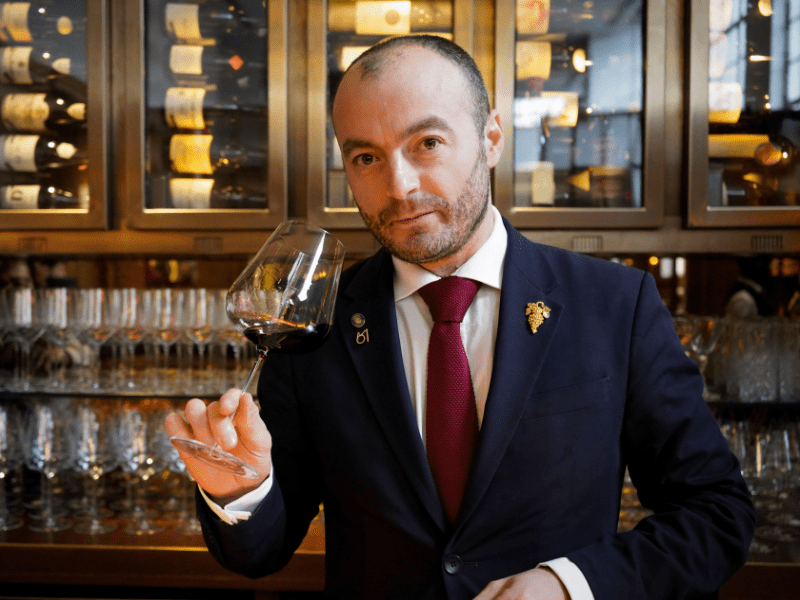CRITIC’S CORNER | Tim Atkin MW
Few – if any – commentators know Rioja better than Tim Atkin MW, and we were delighted to welcome the veteran critic to the London Club to give Members a preview of his 2024 Rioja Report via 12 standout wines from the 1,300 that he tasted in compiling it. Afterwards he gave us his take on Rioja today…

‘Too many people think that the only wines that Rioja produces are Crianzas, Reservas and Gran Reservas aged in American oak. The best of these are marvellous, but there are so many other styles being made today – red, white, sparkling and rosé – often as ‘Genérico’ wines, where the rules about oak ageing are less strict. This diversity, and a growing focus on individual vineyards and terroir, are the trends driving modern Rioja.
‘The cooler 2021 vintage is the best in Rioja since 2001. Now that the wines are in bottle and, in many cases, on the market, I think it deserves its place among the very best years. But if recent years ending in a one – 2001, 2011 and 2021 – have all been excellent, those ending in a three – 2003, 2013 and 2023 – have been very challenging indeed, and I would generally avoid them.
‘Top Rioja is one of the wine world’s greatest bargains’
Tim Atkin MW
‘Rioja is making too much wine, and as a result, there is a crisis of oversupply. Rioja has grown exponentially over the last 40 years – between 1996 and 2005, it added nearly 22,000 hectares, too often in unsuitable places. But paradoxically, crises can be beneficial, at least in hindsight. They provide an opportunity to take a different path. Rioja must head in that direction, away from cheap prices and unexceptional wines, towards a place that reflects its rightful position in the wine world.
‘For most of the last century, Rioja has talked much more about barrels and bodegas than origin. A greater emphasis on the region’s best areas is long overdue. Would it make sense to establish a Burgundian-style system of premiers and grands crus? I think so. There is nothing wrong with identifying and promoting the best. Bordeaux doesn’t pretend that Listrac is as good as Pauillac. Burgundy rates the grands crus of Gevrey-Chambertin above the village parcels on the other side of the Route Nationale 74. Why can’t Rioja do something similar? The selection process would generate controversy, but it would also create interest – surely a good thing. And as Víctor Urrutia, CEO of CVNE puts it, “part of Rioja’s problem is that everything is sold as Rioja, but it’s a very diverse region. Not everything is the same.”
‘There have never been so many bodegas producing so many world-class wines in such a range of styles. The problem is that not enough consumers know about them. Part of the reason for this, paradoxically, is the quality of its commercial reds, many of which are sold at very affordable prices. Taste a range of supermarket Riojas and they are generally drinkable at the very least, especially when compared to cheap Bordeaux, for instance. And yet it is worth trading up. Even Rioja’s finest wines are generally not that expensive. Of my 128 wines of the year, half cost €50 or less, and only 27 retail at €100 or above. Burgundy and Barolo lovers contemplate such prices with nostalgia, knowing that they have gone for ever. For the time being, top Rioja remains one of the wine world’s greatest bargains.’
Tim Atkin MW’s 2024 Rioja Report is available from timatkin.com, and contains almost 1,000 tasting notes, a lengthy introduction to the region, his annual classification of Rioja’s best 200 bodegas and co-operatives, his winemakers and viticulturists of the year, plus tips on where to eat, drink and stay.


ON
THE
LIST|
Elton
Muco


ON
THE
ROAD |
Paul
Richards


UNDER
THE
SURFACE |
Australia’s
fine-wine
ambitions
